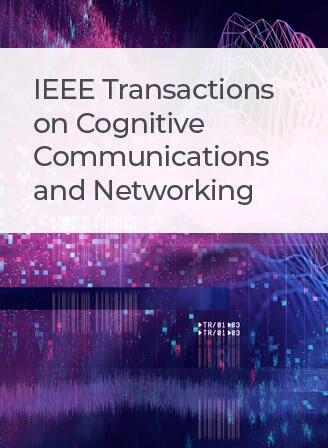用于图像传输与视觉保护的深度源-信道联合编码
IF 7.4
1区 计算机科学
Q1 TELECOMMUNICATIONS
IEEE Transactions on Cognitive Communications and Networking
Pub Date : 2023-08-21
DOI:10.1109/TCCN.2023.3306851
引用次数: 1
摘要
由于引入了深度学习(DL),联合源信道编码(JSCC)取得了巨大成功。与传统的独立信源信道编码(SSCC)方案相比,基于 DL 的联合信源信道编码(DJSCC)具有频谱效率高、重构质量高、可消除 "悬崖效应 "等优点。然而,与传统的 SSCC 方案相比,现有的安全通信机制(如加密-解密机制)很难与 DJSCC 相结合,这阻碍了这一新兴技术的实际应用。为此,我们的论文提出了一种名为基于 DL 的图像联合保护和源信道编码(DJPSCC)的新方法,它能在不明显牺牲图像重构性能的情况下成功保护普通图像的视觉内容。该方法的设计理念是利用神经网络进行视觉保护,在考虑与 DJSCC 的交互作用的情况下,将普通图像转换为视觉保护图像。在训练阶段,拟议的 DJPSCC 方法会学习以下内容:1) 用于图像保护和图像解保护的深度神经网络,以及 2) 用于在保护域中传输图像的有效 DJSCC 网络。与应用 DJSCC 传输的现有源保护方法相比,DJPSCC 方法实现了更好的重构性能。本文章由计算机程序翻译,如有差异,请以英文原文为准。
Deep Joint Source-Channel Coding for Image Transmission With Visual Protection
Joint source-channel coding (JSCC) has achieved great success due to the introduction of deep learning (DL). Compared to traditional separate source-channel coding (SSCC) schemes, the advantages of DL-based JSCC (DJSCC) include high spectrum efficiency, high reconstruction quality, and relief of “cliff effect”. However, it is difficult to couple existing secure communication mechanisms (e.g., encryption-decryption mechanism) with DJSCC in contrast with traditional SSCC schemes, which hinders the practical usage of this emerging technology. To this end, our paper proposes a novel method called DL-based joint protection and source-channel coding (DJPSCC) for images that can successfully protect the visual content of the plain image without significantly sacrificing image reconstruction performance. The idea of the design is to use a neural network to conduct visual protection, which converts the plain image to a visually protected one with the consideration of its interaction with DJSCC. During the training stage, the proposed DJPSCC method learns: 1) deep neural networks for image protection and image deprotection, and 2) an effective DJSCC network for image transmission in the protected domain. Compared to existing source protection methods applied with DJSCC transmission, the DJPSCC method achieves much better reconstruction performance.
求助全文
通过发布文献求助,成功后即可免费获取论文全文。
去求助
来源期刊

IEEE Transactions on Cognitive Communications and Networking
Computer Science-Artificial Intelligence
CiteScore
15.50
自引率
7.00%
发文量
108
期刊介绍:
The IEEE Transactions on Cognitive Communications and Networking (TCCN) aims to publish high-quality manuscripts that push the boundaries of cognitive communications and networking research. Cognitive, in this context, refers to the application of perception, learning, reasoning, memory, and adaptive approaches in communication system design. The transactions welcome submissions that explore various aspects of cognitive communications and networks, focusing on innovative and holistic approaches to complex system design. Key topics covered include architecture, protocols, cross-layer design, and cognition cycle design for cognitive networks. Additionally, research on machine learning, artificial intelligence, end-to-end and distributed intelligence, software-defined networking, cognitive radios, spectrum sharing, and security and privacy issues in cognitive networks are of interest. The publication also encourages papers addressing novel services and applications enabled by these cognitive concepts.
 求助内容:
求助内容: 应助结果提醒方式:
应助结果提醒方式:


